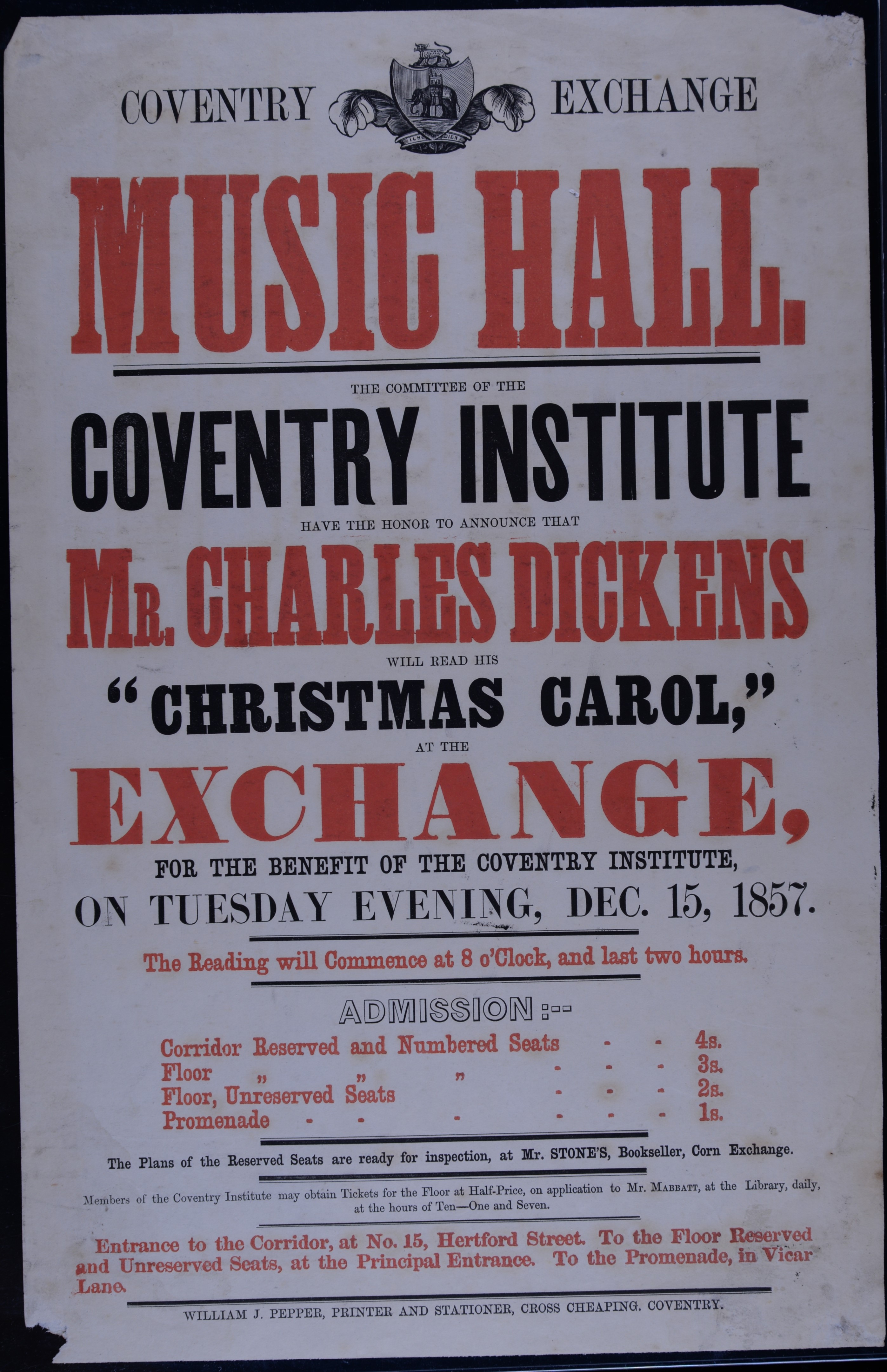Tales from the Archive: Dickens' “A Christmas Carol”
17 December 2021
15 December 1857: Charles Dickens Reads “A Christmas Carol” at the Corn Exchange Music Hall, Hertford Street

In 1843, Dickens gave a speech that was to inspire one of his most enduring works of fiction. The speech was given in praise of the Manchester Athenaeum, and the work was “A Christmas Carol.”
The Manchester Athenaeum had been founded as a charity to help the working poor and at the time of his speech, Britain was in the throes of an economic depression. The problems that Dickens wrote about so often in his fiction and campaigned so tirelessly to redress were all the more evident during this time – problems such as poverty, deprivation, and the lack of educational opportunities for the lower classes. Dickens wrote the novella in just six weeks and the first edition was published at his own expense. By the time he came to perform the work as a theatrical piece in cities all over the land, it had been through numerous re-prints and even adaptations for the stage.
Dickens’s first performance of a “Christmas Carol" was held not far away at Birmingham City Hall. In 1857 he was asked by Joseph Paxton, the designer of the London Road Cemetery, to present “A Christmas Carol” on behalf of the Coventry Institute. Like its counterpart in Manchester, the Institute was a philanthropic organisation founded to bring literature and science to the working poor by means of books, lectures and concerts.
The Corn Exchange had only been open to the public for a couple of years when Dickens made his appearance. It had been designed by James Murray, who would later go on to design the extension to St Mary’s Hall at Half Moon Yard. A settlement deed relating to the Exchange and drawn up in 1854 states that: “Its object will be to maintain a public exchange for corn and other crops, and a hall for meetings and balls” and although it was used primarily as a corn market, the building was indeed of sufficient size to accommodate concerts, entertainments and lectures.
Dickens' performance was a sell-out, and applauded by the reviewer from the Coventry Herald for its “admirable dramatic power.” It raised fifty pounds (the equivalent of around five and a half thousand pounds today) and the following year Dickens was invited back to the city for a dinner held in his honour where, as a token of appreciation, he was presented with a gold watch manufactured by local firm, Rotherham and Sons. Dickens would continue to perform "A Christmas Carol" right up until his death in 1870.